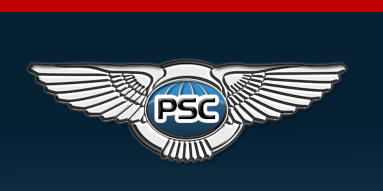
Welcome to the
Parasail Safety Council Website
The worlds premiere source for parasail information
The Rule 26/44 Proposal to modify Florida new Parasail Regulations
The Rule 26/44 Proposal to modify Florida new Parasail Regulations
For those who think parasailing is as simple as a parachute tied to the end of any old
speedboat—think again. With massive amounts of critical thinking dedicated to avoiding injury,
it can seem like the middle ground between a nice day of waterskiing and fearlessly jumping out
of an airplane.
Mark McCulloh, chairman of the Parasail Safety Council, Maitland, FL, and considered by many
to be the most influential inventor in the history of the activity, got hooked at the age of 15
growing up in Florida. Back in 1971, the parasailing of today barely existed, and McCulloh many
times had trouble with existing equipment. "I went through a lot of trial and error to improve it,"
he says. "A lot." He started with platforms. "It was basically like landing on aircraft carriers," he
recalls. "Not a soft landing."
McCulloh has been a major influence in the development of parasailing equipment and safety.
Early Designs
The "Winchboat" would eventually take care of this, allowing a parasailer to take off from the comfort of the
boat. "The first ones started out as a worm drive, a right angle pinion gear," he says. He figured out how much
power was needed to pull a person by weighing down the boat with plastic barrels and loading different sized
canopies with up to 800 to 1,200 pounds. The worm drive gear had a 2.5-inch shaft built with a spool of 36 inches,
inside 28 inches and 8 inches wide. The gear motor ran about 3,000 rpm and had a diesel motor run with a four-
way valve that was throttled.
"We had to build a tower to get rope over and guided this line over a superstructure," he says. "It went over an arm with a hydraulic ram that
would lift you off the boat and you'd be parasailing." The patent application for his first Winchboat was started in 1975.
The chute itself originated from Pierre-Marcel Lemoigne, recognized as the creator of the towable parachute. It had vents in the tail section,
along with stabilizer panels on the side, McCulloh says. Though size varies, McCulloh believes 24 feet to be an optimal size for control and
safety.
While parasailing has a wistful past, there has been many advances made in parasailing today.
Then and Now
The hip harness is more popular today for parasailers, McCulloh says, but originally the shoulder harness was in
favor, and is still used today in water survival training. He also prefers the shoulder design for leverage, but cites a
lack of comfort as to why the switch occurred. An alternative to the harness is the chair, which continues to be
improved. Originally a hefty 90 pounds, it has dropped over the years, and McCulloh is presently working on a
carbon-fiber model weighing around 40 pounds.
Finally, the towbar to which the harnesses are attached, has improved padding and also made adjustable to shift the equilibrium of a heavy or
light person, he says.
Parasailing has changed a great deal from the old days in Florida, McCulloh says, but he still looks back wistfully at its beginnings. "I remember
making a Winchboat concept out of balsa wood," he says. "Millions of people went on to enjoy it."
Eric Butterman is an independent writer for ASME
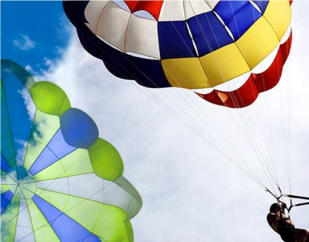
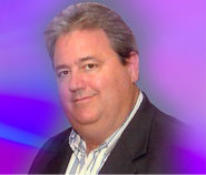
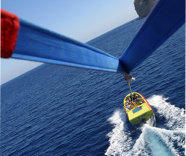
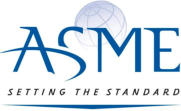
Parasailing Away
July 31, 2013 by Eric Butterman, ASME.org
RULE 26/44
COMMERCIAL PARASAILING
ACCIDENT ANALYSIS AND DISCUSSION ON PROPOSED
REGULATIONS OF RULE 26/44
BACKGROUND
Commercial parasailing, the carrying of a paying passenger secured to a canopy which is dynamically tethered to a ‘winchboat’,
has been in existence since the I begun taking up passengers in and around Miami, Florida in the early 1970’s together along with
my numerous inventions and patents ( see http://www.parasail.org/mark-mcculloh.html )
Today, commercial parasailing has grown in Florida to over one hundred (120+) operations with some offering flights year around
and others only during the peak tourist seasons.
Over the years, commercial parasailing has been plagues with persistent serious accidents many of which have resulted in high
publicity deaths. These deaths not only pose a risk to the public, but have had a negative impact on the parasail industry’s brand,
as well as, that of the global tourism brand the state of Florida. While in the past, the financial risk was limited to the operator, as
the deaths continued.
Today, litigation has spread to include property owners and manufacturers. It would not be unrealistic to anticipate that
municipalities or other government entities would become parties to the actions if no action is taken. The Department of Justice
has also become involved filing criminal cases against Captains and company owners under the Seaman’s Manslaughter Act.
Whereas, Florida has never filed criminal charges involving parasail deaths.
JURISDICTION
The Federal Government controls the sport to a limited aspect through the Coast Guard and to a lesser extent the FAA. Florida
has traditionally relied upon the Department of Fish and Wildlife along with local policing authorities to control and investigate
parasail accidents. Needless to say jurisdiction over a hybrid vessel/air sport is somewhat confusing, which statewide regulations
could clarify. Both Houses of the Florida Congress have from time to time proposed regulating the sport following each death with
no bills from either body having made it to either floor for a vote. The Senate is now considering introducing regulation of
parasailing once again.
QUESTION?
Can commercial parasailing be regulated by the State of Florida in such a manner as to significantly reduce or eliminate serious
injuries or deaths?
ANALYSIS
In order to answer this question in a way that is meaningful to reader the dynamics of parasailing, must be briefly explained as the
sport is more complex than what most tourists and operators might believe or have been told. Parasailing involves a modified
parachute canopy design affecting stability, control, lift and payload theory including but not limited to the characteristics of a
dynamically tethered object, the characteristics of an object in rough seas, wind, weather, equipment maintenance and
performance, launch and retrieval systems, vessel operation and people both as crew and passenger. As to people, specifically
the reaction of people under highly stressful situations like an emergency waterlanding including drowning. ( USCG Search &
Rescue Report located at (www.parasail.org/USCG-Search-Rescue.pdf )
For the purposes of this analysis, we have categorized accidents into two types: a) accidents ‘with tow-line separation’ and b)
accidents ‘without tow- line separation’. Tow-line separation accidents cause more than 60% of the serious injuries and 98% of all
deaths (www.parasail.org/accident-statistics.html)
GENERAL
Tow-Line Separation:
It is important to note that ’tow- line separation’ has often been demonized as the ‘cause’ of many fatal accidents when in fact tow-
line separation itself, is not dangerous nor is the direct cause of injuries and in some case plays an important role in preventing
serious vessel accidents by acting as the ‘ weak link’ thus prevent equipment damage and vessel capsizing injuring both crew and
passengers . (See: Lake George, New York accident where cable strength surpassed vessel capability and capsized 2009)
See also Vessel Stability Reports, US Coast Guard Stability Investigations and USCG Commandant Directive on parasail winchboat
stability requirements for inspected vessels. Click links below to download reports.
1.
1990-02-28-McCulloh-Evaluation-Stability-Study-to-USCG-Commander
2.
1990-06-USCG-Vessel-Capsizing-Investigation-Recommendations
3.
1991-06-USCG-Commandant-Action-Letter
While a combination of factors may be involved in ‘tow line separation accidents’, there are certain key and reoccurring themes
that warrant consideration which can be categorized into two types a) ‘tow- line separation in high winds resulting in non-
waterlandings’ and b) ‘tow- line separation in high winds resulting in waterlandings’.
TOW-LINE SEPARATION ACCIDENTS
Tow-Line Separation: (High Wind, Non-Water Landings)
In order to eliminate accidents involving non water landings the parasail flight distance to shore and other fixed objects must be
calculated and controlled. By doing this one can conclude by example that flights at 600' feet ASL must remain 1800' from shore to
avoid a shore landing. Lower flight parameters would allow for closer to shore distances based on the glide slope ratio of the
canopy in use. These calculations and resulting distances are available and easily applied to an operation. . (See: Panama City
Accident 2013 involving high altitude flight near shore) Solution- Regulate distance to shore and other fixed objects
Tow-Line Separation: (High Wind + Water Landing)
Tow-line separation in high winds resulting in waterlandings has resulted in more than 98% of all of the serious injuries and deaths
worldwide. As expressed earlier there is no evidence to suggest that tow-line separation in and of itself is the cause of these
injuries. In order to eliminate this type of accident we must analyze the risk factors which follow the separation and attempt to
significantly reduce each one of their impact.
Tow-Line Separation Risk Factors: (High Wind + Water Landing)
During a, ’tow- line separation in high winds resulting in a water landings’, the crew and passengers face three risk factors.
1.
The first is the characteristic of a parasail canopy to be able to re-inflate itself after its payload (passenger(s) have landed in
the water.
2.
The second is the parasailor’s inability to separate themselves from the canopy thus forcing them to be drug backwards by a
re-inflated canopy in whatever path it takes.
3.
The third is the glide slope ratio of the canopy as it relates to height and distance to shore or other rigid life threatening
objects and the canopy’s ability to reach them after the tow-line has separated.
Rescue Plans Tow-Line Separation: (High Wind + Water Landing + Rescue )
Implementing a successful rescue strategy is paramount in any type of water landing. Various rescue strategies have been
deployed over the years with minimal success in parasail fatality prevention and fall short of having a significant impact. All of
these plans are based on the use of a single or multi passenger harness support system:
1.
Tow Vessel: Ensnare Canopy: Use: Wide Spread-The most prevalent rescue plan in use today is for the winchboat to overtake
and run over the runaway canopy. The distance to parasailor, ground speed of canopy and time to achieve results vs.
drowning time assuming the canopy is at water level, greatly reduce the odds of this solution’s successful implementation.
2.
Chase Boat: Ensnare Canopy: Use- Rare -This plan involves operating a second vessel and crew that follows the parasailors
throughout the flight with the assumption that it will be better positioned to rescue the parasailor/canopy as needed. While
this plan seems viable carrying out this plan may be cost prohibitive and even dangerous in high parasail flight concentrations
such as the Pensacola area. The rationale behind this plan is the tacit admission that plan 1 ‘Run Over Canopy’ and Plan 3
‘Gaff Pole’ may not be feasible in terms of the vessel’s requirement to overtake the canopy in a timely manner. Thus this plan
casts doubt by its endorsers on those two other plans.
3.
‘Gaff’ Pole: Use-Very Few -This plan involves a long pole with a ‘shepherds hook’ on the end. The concept is to chase down
and snare the runaway canopy using this device thus in theory preventing it from remaining inflated. The challenges found in
the previous plan apply along with false assumption that a single person can snare and deflate a canopy with high lift
capability failed in a real life rescue attempt resulting in the death of a parasailor.
4.
‘Drogue Style’ Devices: Use- Few -This plan involves a manually activated ‘drogue device’ deployed by the parasailor and/or
crew which acts like a sea anchor attached to the canopy, which when filled with water causes the canopy to sink back into the
water. When deployed by the parasailor, it requires the parasailor to locate and pull on the loop handle. In the case of the
crew, it requires the tow vessel to chase down the canopy so the crew can engage the loop handle with a gaff pole. All of the
challenges given require extensive training and execution by the passengers and crew to carry out this task under extremely
stressful and life threatening situations. It also has the danger of pre-emergency deployment in adverse conditions which
failed reliability testing in the mid 80’s and 90’s.
Which Risk Has The Greatest Impact On The Reduction of Fatalities?
Based on existing rescue plans involving specifically the “harness support systems” are for the most part ineffective as none of
them prevent or mitigate the three risk factors explained in Tow-Line Separation Risk Factors above i.e. a) canopy re-inflation, b)
harness escape and; c) glide/ slope ratio prior to the accident.
While all three risks play a significant role in parasailing deaths, one stands out above the rest. The parasailor’s inability to escape
or free themselves from the canopy is the root cause of serious injuries and fatalities to date.
In fact, it is this ‘inability to escape’ which both propagated the many different rescue plans and which has stymied them as well.
Why?
1.
There is a prevalent use in the US of a body harness passenger support system which is designed to keep the wearer from
falling out of or inadvertently escaping the harness. This includes during and after an emergency waterlanding
2.
The original full body harness design which connected the passenger to the canopy at the top of the shoulder was modified in
the 1980’s and is now referred to as the half body harness and connects the parasailor at the hip. This change of convenience
tends to flip the wearer upside down when being dragged backwards through the water.
3.
A drowning person especially one being drug through the water is not rational or capable of carrying out any type of
instructions or commands. This is supported by numerous studies including one in particular published by the Journal of U. S.
Coast Guard Search and Rescue magazine entitled "It Doesn’t Look Like They’re Drowning” ( View Article )
So therein lies the dilemma. A harness which is the parasailor’s friend in the sky can become their enemy in the water. (Watch
Video)
NON-TOW LINE SEPARATION ACCIDENTS
Non Tow-Line Separation Accidents while less frequent, have been connected to deaths and serious injuries as well. (See accident
in Pompano Beach , Bahamas and Long Boat Key, Ft. Myers) where passenger support system failure was the root cause. These
accidents are principally based on mechanical/material failure and negligence. They also involve poor rescue techniques involving
a stationary floating passenger.
Based on a review of all significant accidents going back three decades, the non tow-line separation accidents are best eliminated
through proper equipment configuration, specific use, and routine maintenance and replacement, including the Winchboat vessel
system.
HOW DO WE SOLVE THIS DILEMMA?
It is my professional opinion, based on years of empirical accident data and experience, that we will only achieve the goal of
preventing both serious parasail accidents and fatalities by restricting the canopy size based on the type of passenger support
system in use.
In fact, if regulators were to implement limitations on canopy size based on equipment types as outlined below, new regulations
dealing with parasail accidents and fatality prevention resulting from tow line separations and emergency waterlandings in
dangerous wind conditions would be unnecessary.
THIS REGULATION MAY BE SUMMED UP IN TWO WORDS: [RULE 26/44]
The strength of Rule 26/44, is derived from its simplicity and effectiveness. Parasail captains ONLY NEED TO BE REGULATED AS TO
THEIR MAXIMUM CANOPY SIZE BASED ON THE PARASAIL PASSENGER SUPPORT SYSTEM THEY ARE USING.
Rule 26/44 would be easy to regulate and inexpensive to adopt and enforce. It requires no experience, no specialized training or
reliance on any other type of equipment that creates additional duties, burdens and liability to the operator and parasailor.
Simply stated, Rule 26/44 eliminates these problematic areas.
SUMMARY OF THE RULE 26/44 PROPOSAL
To prevent future parasail fatalities, the RULE 26/44 provision that places restrictions on Passenger Support Systems and Canopy
size should be included with any new commercial parasailing regulations.
1.
Passenger Support System: Under rule 26/44, all parasail vessels must be equipped with a passenger support system that
includes a “harness style” and/or "gondola style" systems or both.
2.
Canopy Diameter Restrictions: Under rule 26/44, the maximum diameter of Parasail canopies used for commercial
parasailing must be not exceed 26’ feet for the harness style passenger support system and 44’ feet for the Gondola
passenger support system.
THE SCIENCE BEHIND RULE 26/44
A combination of wind speed, payload and canopy size have a direct correlation as to the probability of a parasailor drowning as
the result of emergency waterlandings in high winds after a tow line separation. The totality and complexity of this scenario makes
regulating these variables, extremely difficult, if not impossible to draft, operators to comply with and their enforcement.
Placing restrictions on canopy size is the key to waterlanding survival especially for 'harness' flights because parasailor(s) are
irrevocably attached to the harness/canopy system.
We know that the flight characteristics of a 26’ foot canopy in that it will not fully re-inflate before self-deflating given any pay load
above 90lbs in wind speeds up to 30 knots. As such, the likelihood of a 'harness' drowning as the result of a 26' runaway canopy is
less than 0.01%.
Unlike the harness, the gondola style support system, which surrounds parasailor(s) in a protective frame without physical
restraints, allows for easy evacuation from a reclined position in the event of a waterlanding even in winds speeds exceeding 30
knots, thus the larger allowable canopy size of up to 44' feet without endangering the parasailors.
CONCLUSION
The sport as presently practiced commercially. We can conclude from statistics, accident reconstruction and imperial data that
preventing injury or death to a parasailor
in the Tow-Line Separation: (High Wind + Water Landing) accident category, would have a significant impact on the reduction of
this risk! Theoretically we have found that solving these factors and preventing serious injuries and deaths may be simpler than
we have been lead to believe. The real question is no longer whether there can be effective regulations. The real question is who
has the wisdom to implement them.
NOTES TO THE RULE:
This rule did not consider any devices including those that are labeled and/or marketed as parasail safety products that have not
been tested and validated by a certified engineering firm and which have not meet the minimum requirements for product liability
insurance underwriting
The report was prepared and submitted on 08/09/2013 by:
Mark McCulloh
Parasail Safety Expert / Consultant
The Clayton & McCulloh Building
1065 Maitland Center Commons Blvd.
Maitland, FL 32751
For more resources regarding parasail accidents and statistics, please visit http://www.parasail.org/accident-statistics.html

NTSB Parasailing Report is a wake-up-call !
By MARK McCULLOH - Posted 7/2/2014 - Commentary
I applaud the NTSB’s scathing report tackling parasail industry shortcomings and should serve as a "wake-up call" to industry
stakeholders that strict regulations are forthcoming and the importance of working with various regulatory agencies to stabilize this
popular aerial adventure which generates hundreds of millions annually.
The report and its conclusions were long overdue, and supports a long standing presumption that by regulating the industry with all of
its complexities and personalities will prevent future injuries and fatalities.
While this may be true in a few accident scenarios as briefly outlined in the report. Regulations in and of themselves would not have
prevented fatalities caused by, or resulting from, water-landings in high winds with a runaway parasail that has drown many participants
from their inability to release themselves from the harness which is in use nationwide.
In this scenario, no amount of regulations, training, equipment inspection or specialty gadgets being considered would have altered this
outcome which represents the vast majority of parasail fatalities worldwide. In summary, changing this grim reality, can only be realized
by modifying or replacing the body harness itself.
However, focusing only on the grim realities of parasailing misses the promising hope that both regulatory agencies and stakeholders
have reached a consensus to move forward with some form of regulations on a national level.
My only descent, is if the imperial data on the harness defects and other issues outlined in my 5/07/2014 post below are not fully
addressed an implemented into future regulations. Parasail fatalities will continue, insurance rates will skyrocket only to the industries
demise.
Respectfully submitted,
Mark McCulloh
DOWNLOAD NTSB REPORTS
> NTSB-SPECIAL-INVESTIGATION-PARASAILING-SIR1402.pdf
> NTSB- PARASAIL-TOWLINE-fAILURE-SA-036.pdf
____________________________________________________________________________________________________________
NTSB says parasailing is risky, urges regulation
By BETH J. HARPAZ — Associated Press - 1, 2014 5:36 PM EDT - Beth Harpaz on Twitter: @AP_Travel
Click link to read story: http://bigstory.ap.org/article/ntsb-says-parasailing-risky-urges-regulation-0
___________________________________________________________________________________________________________
Bill To Regulate Parasailing Signed Into Law By Governor Scott
By MARK McCULLOH - Posted 6/24/2014
The new legislation signed into law today by Governor Scott requires commercial parasailing operators to stop their activities when
weather conditions make parasailing unsafe. Owners of commercial parasailing businesses must keep a weather log and have
equipment on their vessels to receive weather updates. The bill also requires commercial operators maintain liability insurance with a
minimum of $1 million in personal injury coverage.
It would be a fair assumption that most industry stakeholders agree with the new law, but understand that safety issues still exist.
The good news is that Florida’s new parasail bill will discourage operator complacency and encourage them to follow standards to
ensure operational continuity in the State of Florida. While these regulations are a good first start, there is much more that both
operators and regulatory agencies can do to promote parasail safety.
Respectfully submitted,
Mark McCulloh
___________________________________________________________________________________________________________
The Florida Legislature finally passes parasailing regulations
The Florida Senate on Thursday May 1, 2014 voted unanimously to regulate parasailing under bill SB 320.
By MARK McCULLOH - Posted 5/07/2014
After 5 attempts and 4 years, the State of Florida finally passes a Parasailing Bill to start the process of governing one of the largest
population of commercial parasail operators in the country.
Having been an advocate and consultant for regulations since the mid 80’s
publishing the world first Operating Standards and
Guidelines for Parasailing (1985) in anticipation of a growing demand for parasailing
I fully support SB 320 as presented by Senator Maria Sachs, and commend her steadfast determination in taking this bill across the
finish line. The Parasail Bill SB 320 is a good first step in the right and should open the door to implement more sweeping reforms that
will prevent fatalities.
More specifically, the proposed amendments would;
1. Place limitations on parasail canopy size based on passenger support types; ie: body harness and/or Gondola (Rule 44 report)
2. Expand penalty provision against a Captain who is found be willfully negligent in a parasail fatality
3. Mandate that all parasail vessels be equipped with weather radar that delivers up-to-the-minute forecasts, storm alerts with visual.
4. Encourage Parasail equipment manufacturers in Florida to carry products liability insurance.
5. Institute mandatory replacement time/date stamps on all parasail canopies, passenger support systems and towline based on both
number of flights or storage whichever comes first.
These suggestions are supported by some operators who want to stabilize the industry, and may be challenged by others which are
heavily invested in reducing operating cost and maintaining the status quo.
Unfortunately, without adding meaningful reforms like the ones mention above, parasail fatalities will continue and insurance cost (which
have almost tripled in the last few years) will continue to skyrocket making it unaffordable and out of reach for the majority.
Respectfully submitted,
Mark McCulloh
Parasail Safety Council
Main Office The Clayton & McCulloh Office Building 1065 Maitland Center Commons Blvd. Maitland, FL 32751 Telephone : (321-236-1522 Email: mark@parasail.org © 1998-2022 Mark McCulloh - All Rights Reserved
General Disclaimer: This website is provided “as is” without any representations or warranties, express or
implied. Mark McCulloh makes no representations or warranties in relation to this website or the
information and materials provided on this website. Without prejudice to the generality of the foregoing
paragraph, Mark McCulloh does not warrant that: a) this website will be constantly available, or available
at all; or b) the information on this website is complete, true, accurate or non-misleading. Nothing on this
website constitutes, or is meant to constitute, advice of any kind. Limitations of liability: Mark McCulloh
will not be liable to you (whether under the law of contract, the law of torts or otherwise) in relation to the
contents of, or use of, or otherwise in connection with, this website: a) to the extent that the website is
provided free-of-charge, for any direct loss; b)for any indirect, special or consequential loss; or c) for any
business losses, loss of revenue, income, profits or anticipated savings, loss of contracts or business
relationships, loss of reputation or goodwill, or loss or corruption of information or data. These
limitations of liability apply even if Mark McCulloh has been expressly advised of the potential loss. By
using this website, you agree that the exclusions and limitations of liability set out in this website
disclaimer are reasonable. If you do not think they are reasonable, you must not use this website

Industry News Highlights
Parasail Safety Update in Florida
By MARK McCULLOH - Posted 5/19/2014 - Commentary
I was recently invited to accompany NBC’s “Jeff Rossen Reports” team to visit parasail operations in Florida and Cancun, Mexico to
evaluate the operations for any signs of progress in the effort to prevent or reduce parasailing accidents and fatalities. To
accomplish our goal, producer Josh Davis and his associate producer Lindsey Bomnin agreed to go parasailing undercover as
tourist and video document their experience. I would then review the footage and provide my expert commentary.
I am happy to report that the operations in both Maderia Beach and Clearwater Beach appeared to follow the general operating
guidelines of professional operators with the exception of the towing altitudes. When they were asked about altitude, the
general answer was that they let out about a 1000’ feet of tow rope but don’t exceed 500’. Based on the math [1000 feet * sin
(max 55 degrees tow angle off of the horizon) would equal 819 feet]. That’s just to high !
Unfortunately, the operations we visited in Cancun, Mexico still ignore the most basic safe operating practices as outline by Jeff
Rossen reports that aired on the Today show http://www.today.com/money/parasailing-safey-issues-revealed-scares-air-t21781












